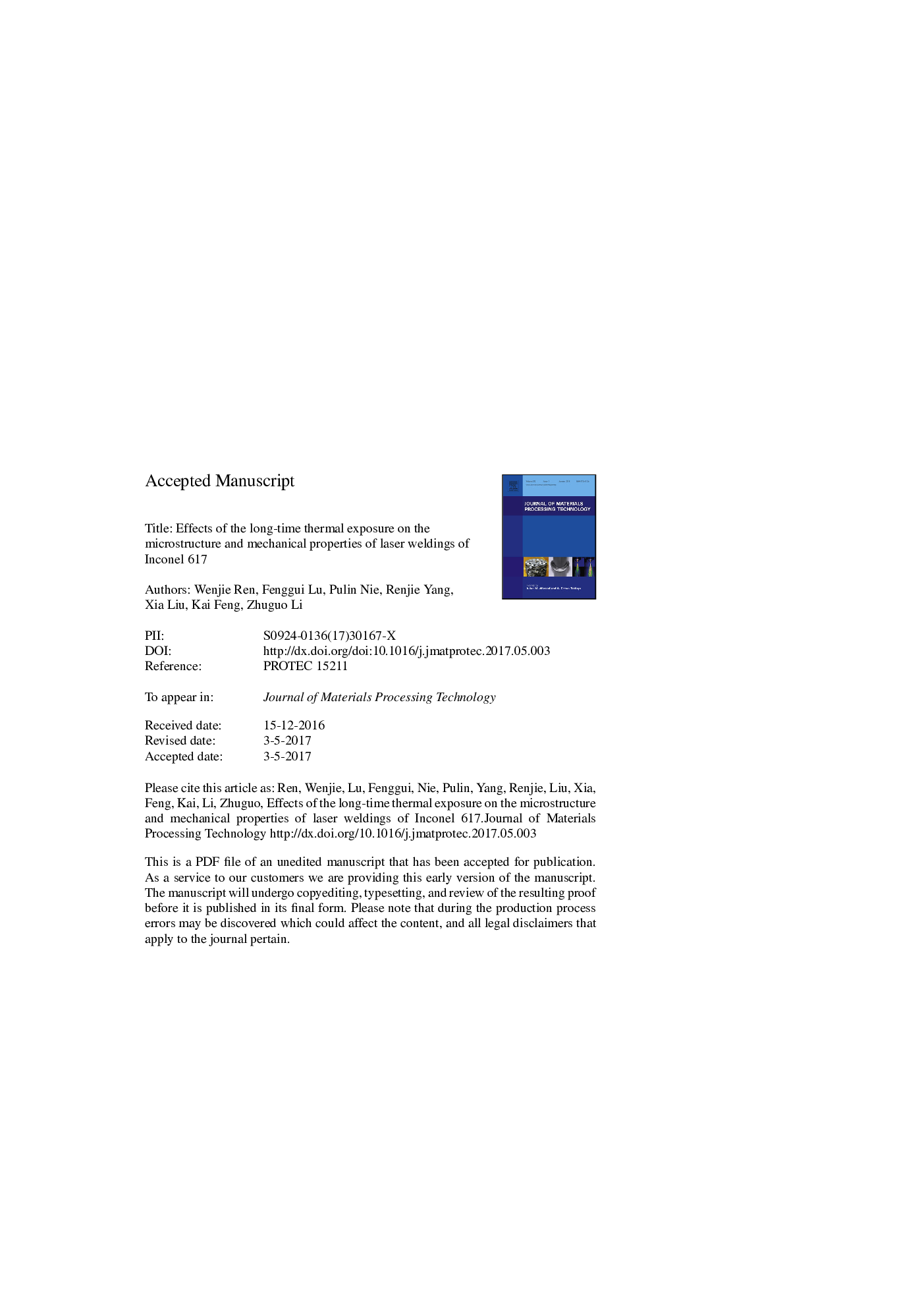| Article ID | Journal | Published Year | Pages | File Type |
|---|---|---|---|---|
| 5017793 | Journal of Materials Processing Technology | 2017 | 28 Pages |
Abstract
During thermal exposure between 500 h and 7000 h at 850 °C and 950 °C, Ti(C,N), M6C-type (Ni,Co,Cr)3Mo3C, M23C6-type (Cr,Mo,Ni)23C6 carbides and non-topological close-packed phases (TCP) phases formed in the welds. M6C and M23C6 carbides formed due to both the reaction between C, Mo and Cr and the dissociation of M23C6, M6C and Ti(C,N). The coarsening (Ostwald ripening) rate of M6C carbides was greater than that of M23C6 carbides. The area fractions and average diameters of M23C6 carbides increased due to the long-range diffusion of Cr atoms at 950 °C. Hardness of weld metals decreased with increasing exposure time both at 850 °C and 950 °C due to a decrease of Mo and Cr in solution. From 500 h to 7000 h, the impact energy values of the weld metals exposed at 850 °C decreased due to an increment in area fractions and sizes of M6C carbides, while the impact energy values of weld metals exposed at 950 °C increased because of a decrease of Cr in solution and an increase in the sizes and spaces of GB M23C6 carbides.
Related Topics
Physical Sciences and Engineering
Engineering
Industrial and Manufacturing Engineering
Authors
Wenjie Ren, Fenggui Lu, Pulin Nie, Renjie Yang, Xia Liu, Kai Feng, Zhuguo Li,
